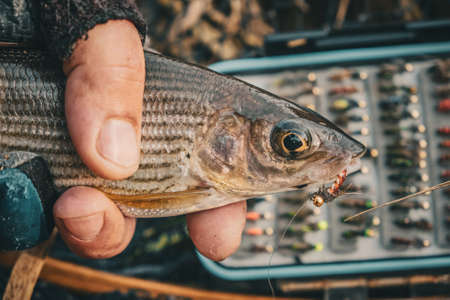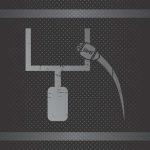1. Choose the Right Tackle Box for Your Needs
Before you can organize your tackle like a pro, you’ve got to start with the right tackle box. Not all tackle boxes are created equal, and choosing the one that fits your fishing style can make a big difference in how efficient and enjoyable your time on the water is.
Types of Tackle Boxes
There are several types of tackle boxes out there, each with its own pros and cons. Here’s a quick breakdown to help you compare:
| Type | Description | Best For |
|---|---|---|
| Hard-Sided Tackle Boxes | Durable plastic or metal cases with multiple trays or compartments that fold out. | Anglers who fish from boats or shore and want long-lasting storage. |
| Soft-Sided Tackle Bags | Made from fabric with zippered pockets; usually includes removable plastic utility boxes inside. | Bank anglers or travelers looking for portability and flexibility. |
| Tackle Backpacks | A backpack-style option designed to carry gear hands-free, often with rod holders and hydration pockets. | Hikers, shore anglers, or those walking long distances to their fishing spot. |
How to Pick What Works Best for You
Consider Your Fishing Style
If youre mostly fishing from a boat, a hard-sided box gives you stability and organization. On the other hand, if you’re hiking to remote spots or like being mobile, a soft bag or backpack keeps things light and easy to carry.
Think About Your Target Species
Catching bass? You’ll want plenty of space for crankbaits, soft plastics, and terminal tackle. Going after trout in mountain streams? You might only need a small box with a few spinners and flies. Match your box size and layout with the gear your target species requires.
Storage Requirements Matter
If you have a lot of lures, hooks, sinkers, and tools, go for a larger box with adjustable compartments. If youre just starting out or only fish occasionally, something compact will do just fine—and it won’t weigh you down.
Pro Tip:
Look for waterproof zippers or sealed lids if you fish in wet environments. Saltwater anglers should also consider corrosion-resistant materials to protect their gear.
The right tackle box sets the tone for how well you can manage your gear while on the water. Once you’ve got one that suits your needs, organizing everything inside becomes much easier—and way more effective.
2. Sort Your Tackle by Category
When youre out on the water and the fish are biting, every second counts. That’s why organizing your tackle box by category is a game-changer. Grouping your gear in a smart, logical way makes it easy to find exactly what you need, exactly when you need it. Let’s break down how to do it like a pro.
Why Categorizing Matters
Think of your tackle box like a toolbox. You wouldn’t throw all your tools into one drawer, right? The same goes for fishing gear. By sorting items into specific categories, youll avoid digging through a mess and wasting precious time. Plus, it helps keep your gear in good condition.
Common Tackle Categories
Here’s a simple guide to the main categories most anglers use when organizing their tackle boxes:
| Category | What It Includes |
|---|---|
| Hooks | All sizes and styles, from worm hooks to treble hooks |
| Weights/Sinkers | Split shots, bullet weights, egg sinkers, etc. |
| Soft Plastics | Worms, creature baits, swimbaits, grubs |
| Hard Baits | Crankbaits, jerkbaits, topwaters, lipless baits |
| Terminal Tackle | Swivels, snaps, beads, bobber stops—small essentials |
Pro Tip:
Use small plastic containers or adjustable compartments within your tackle box to separate each category. Label them if needed—especially helpful for beginners or when sharing gear with others.
A Place for Everything
If your tackle box has multiple trays or layers, dedicate each level to a certain type of gear. For example:
- Top Tray: Terminal tackle and frequently used hooks
- Middle Tray: Hard baits organized by depth or style
- Bottom Tray: Soft plastics and larger accessories like pliers or line cutters
Stay Consistent
The key is consistency. Once you’ve got your system down, stick with it every time you pack up after a trip. This habit saves time later and keeps your gear ready for action whenever the fish are calling.

3. Use Utility Trays and Dividers Effectively
One of the easiest ways to keep your tackle box organized like a pro is by making smart use of utility trays and adjustable dividers. These tools let you customize the layout of your box so everything has its own place, which means less time digging around and more time fishing.
Customize Your Layout
Most modern tackle boxes come with removable or adjustable dividers. These let you create compartments that fit your gear just right—whether it’s small hooks, medium-sized crankbaits, or bulky pliers. By setting up your tackle box based on what you actually carry, you cut down on wasted space and avoid clutter.
Example Layout for a Freshwater Angler:
| Compartment | Suggested Contents |
|---|---|
| Small Compartments | Hooks, swivels, sinkers |
| Medium Compartments | Soft plastics, jigs, spinners |
| Large Compartments | Lures, pliers, line spool |
Add Labels for Quick Access
If you’ve got multiple trays or layers in your tackle box, labeling them can save you serious time. Use waterproof labels or a label maker to mark sections like “Topwater,” “Terminal Tackle,” or “Saltwater Gear.” This is especially helpful when youre out on the water and need to act fast.
Use Clear Lids When Possible
Tackle trays with clear lids make it easy to see what’s inside without opening every compartment. This is great for both soft baits and hard lures—you’ll know exactly where everything is at a glance.
Keep Frequently Used Items Accessible
Place your go-to gear in the top tray or most accessible area. That way, when the bite is hot, youre not wasting precious minutes searching for your favorite lure or tool.
Pro Tip:
If youre switching between freshwater and saltwater fishing often, consider using separate trays for each type of gear. Just swap out the tray depending on your trip—no need to reorganize every time!
4. Maintain Seasonal and Location-Specific Setups
One of the smartest ways to organize your tackle box like a pro is by preparing different setups based on the season and where you’re fishing. Fish behave differently throughout the year, and certain lures or gear work better in specific regions. By tailoring your tackle box to match these changes, you’ll save time on the water and boost your chances of success.
Why Seasonal Setups Matter
Fish species follow seasonal patterns. For example, bass tend to stay in shallow waters during spring for spawning, but move deeper in summer to stay cool. Matching your gear to these seasonal behaviors makes it easier to catch them.
Suggested Seasonal Gear Setup
| Season | Recommended Lures | Target Species |
|---|---|---|
| Spring | Spinnerbaits, Jerkbaits | Bass, Crappie |
| Summer | Topwater Lures, Deep-diving Crankbaits | Bass, Catfish |
| Fall | Spoons, Lipless Crankbaits | Panfish, Walleye |
| Winter | Jigs, Blade Baits | Trout, Perch |
Location-Based Tackle Organization
If you fish in multiple locations—like freshwater lakes, coastal areas, or rivers—it helps to have a setup ready for each. That way you won’t be scrambling through all your gear trying to find what works best at a new spot.
Example Location-Based Tackle Box Setup
| Fishing Location | Essential Gear |
|---|---|
| Freshwater Lake | Soft Plastics, Spinnerbaits, Worm Hooks |
| Coastal Inshore | Shrimp Imitations, Jig Heads, Popping Corks |
| River Fishing | Spoons, Inline Spinners, Weights for Current Control |
Create Grab-and-Go Kits
A great pro tip is to use small utility boxes or zippered pouches labeled by season or location. Keep one for “Spring Bass” or another for “Saltwater Redfish.” That way when it’s time to hit the water, you just grab the right kit and go—no fuss required.
5. Keep Your Gear Clean and Rust-Free
Keeping your tackle box clean and your gear rust-free is one of the easiest ways to make sure everything works when you need it most. Moisture is the number one enemy of fishing tackle—hooks, swivels, lures, and even your box itself can suffer if not properly cared for. Here are some simple tips to help you protect your investment and stay organized like a pro.
Dry Your Gear After Every Trip
After a day on the water, its tempting to just toss everything back into the box and call it a day. But taking a few extra minutes to dry off your gear can save you money and frustration later. Lay out your lures, hooks, and tools on a towel or drying rack before putting them back in the tackle box. This helps prevent rust and keeps everything in top shape.
Use Anti-Rust Tabs or Desiccant Packs
Adding anti-rust tabs or silica gel packets to your tackle box is a cheap and easy way to control moisture. These small inserts absorb humidity and create a dry environment inside the box, which helps prevent metal parts from corroding. You can find them at most sporting goods stores or online.
Common Anti-Rust Solutions
| Product | Purpose | Where to Get It |
|---|---|---|
| Anti-Rust Tabs | Absorb moisture & prevent corrosion | Tackle shops, online retailers |
| Silica Gel Packs | Keep interior dry by absorbing humidity | Amazon, hardware stores |
| Rust Inhibitor Spray | Adds protective coating on metal gear | Outdoor & hardware stores |
Clean Your Tackle Box Regularly
Dirt, fish slime, saltwater, and old bait residue can build up over time. Empty your tackle box every few weeks and give it a quick wipe-down with mild soap and warm water. Make sure it’s completely dry before restocking your gear.
Store in a Cool, Dry Place
If youre not going fishing for a while, store your tackle box indoors in a cool, dry spot—preferably not in your car trunk or garage where temperature swings and humidity can damage your gear over time.
Quick Tips Recap:
- Always dry gear before storing it.
- Add anti-rust tabs or desiccants to absorb moisture.
- Clean out your tackle box regularly.
- Avoid leaving wet items inside compartments.
- Store the box in a climate-controlled environment when not in use.
Your tackle will last longer, perform better, and stay organized if you keep it clean and rust-free!


